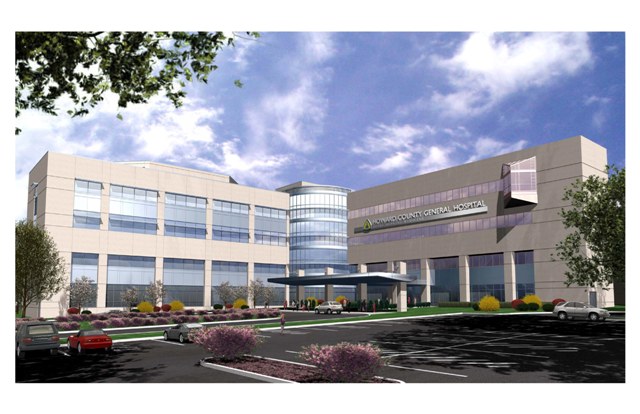
STRUCTURAL OPTION
HOWARD COUNTY GENERAL HOSPITAL
COLUMBIA, MD
| |
| Home |
| Kelly Dooley's Biography |
| Building Statistics |
| Thesis Abstract |
| Technical Assignments |
| Thesis Research |
| Thesis Proposal |
| Presentation |
| Final Report |
| Senior Thesis e-Studio |
| Note: While great efforts have been taken to provide accurate and complete information on the pages of CPEP, please be aware that the information contained herewith is considered a work‐in‐progress for this thesis project. Modifications and changes related to the original building designs and construction methodologies for this senior thesis project are solely the interpretation of Christopher Ankeny. Changes and discrepancies in no way imply that the original design contained errors or was flawed. Differing assumptions, code references, requirements, and methodologies have been incorporated into this thesis project; therefore, investigation results may vary from the original design. |
![]()
BUILDING STATISTICS

General Building Data:
Architecture:
Building Systems: The Howard County Hospital tower addition utilizes composite steel and lightweight concrete for the floor system and moment frames for the lateral bracing system. A typical floor is composed of 3 ¼” lightweight concrete on 2” 18 gage galvanized metal deck for a total floor thickness of 5 ¼”. This is present at all floors and the main roof, which is also the penthouse floor. The penthouse roof is 1 ½” deep 20 gage roof deck. Infill floor beams are typically one of three sizes – W12x19, W14x22, or W16x26. The W12x19s are generally 19 feet long and spaced at 7’-3”. Both the W14x22 and W16x26 are generally 29 feet long, but the W14s are spaced at 7’-3” while the W16s are spaced at 9’-8”. Girder sizes range between W16s and W24s. Many of the beams and girders require ¾” or 1” camber to meet deflection requirements. There is a wide range of column sizes used in the tower addition ranging from W12x40s to W14x193s. Typically, the column bays are 29 by 29 feet. Most columns and are spliced at the 2nd and 4th floors. The towers main lateral force resisting system is composed of 19 typical moment connections at each floor. Of the 19 moment connections, 8 are located along the exterior of the building and 11 are located throughout the interior. The moment frames are double angle connections bolted to the columns and welded to the beam webs with top and bottom full penetration welds to connect the beam flanges. Moment connection required capacities range from 20 kips to 80 kips. For the foundation, standard square spread footings ranging from 3 by 3 feet to 11 by 11 feet were used at all interior and most exterior footings. A portion of the North wall abuts an existing retaining wall so rectangular footings are required. At the basement level, the building is surrounded by a 16” concrete foundation wall with a 2’-4” continuous footing. Whiting-Turner is the Construction Manager for this addition to Howard County General Hospital. Excavation for the basement level just began this month (September of 2007). Since the addition is adjacent to the existing hospital, it requires a significant amount of preparation. The existing footings had to be underpinned and soldier piles were driven into the ground to take the horizontal earth pressure. In between the soldier piles, wood timber lagging was installed in five-foot lifts to one foot below each of the temporary tie back elevations. The lagging has to be in firm contact with the soil to avoid soil movement. Seven wire post tension cables were used for the tie backs. This lagging process continues as excavation proceeds to subgrade elevation. Following the excavation, Whiting-Turner will prepare formwork for the new footings and slab on grade. Then the concrete foundation walls will be formed and poured. Once the footings, foundation walls, and slab on grade have been prepared and poured, steel erection of the columns, then beams, will occur for all levels creating the building frame. Finally, the steel deck will be placed followed by the concrete fill poured for the floor slabs. The mechanical systems for the Howard County Hospital tower addition include heating, ventilating, and air conditioning systems. Being that this is a hospital, there were also needs for medical gas and vacuum systems. The ventilation requirements for different rooms varied from two air changes per hour for corridors to fifteen air changes per hour for isolation patient rooms and operating rooms according to ASHRAE and AIA DHHS guidelines. Typical patient rooms, which occupy most of the space in the new tower, require six minimum total air changes per hour, 2 of which being outside air changes per hour. Based on these requirements, an approximate airflow 140,000 CFM was calculated. Two new 70,000 CFM aluminum factory constructed air handling units, each capable of providing a minimum of 25% outdoor air, are being added to the penthouse of the new tower. Medium pressure supply and return ducts will be routed into the ceilings of each floor then to VAV supply air terminal units in each room. For Heating and Cooling, design parameters of 0 degrees winter and 95 degrees dry bulb and 79 degrees wet bulb were used. Four additional boilers and a new chiller are being added to accommodate the new PPH loads. The existing Johnson Controls system will be extended to the new tower allowing a setpoint adjustment between 68 and 75 degrees within the spaces. In addition, radiant ceiling panels are being provided in each patient room by the windows for supplemental heating. Currently, Howard County Hospital is served by Baltimore Gas & Electric via 13.2 kV underground conductors terminating at a 15 kV switchgear with 7 feeders serving various parts of the hospital. The National Electric Code requires certain amounts of branch circuits, emergency branch circuits, outlets and receptacles based on whether rooms are critical patient care areas, general patient care areas, or non-patient care areas. The new demand load of the whole hospital with the new patient tower was calculated to be 4634 kW including a 25% growth factor. The new patient tower alone is anticipated to require 860 kW of normal power plus 1074 kW for the new mechanical equipment. For the new normal power loads, at 480Y/277 volts, the existing substation has the capacity and space within the switchgear to serve the estimated 1150 amp load. A new 3P-1600 amp circuit breaker will be installed within the switchgear and a 1600 amp feeder will terminate in the new electrical room at a new 480Y/277 volt rated switchboard. For the mechanical equipment, a new 800 amp feeder will be routed up from the switchgear (which has available space) in the existing substation to the new penthouse to carry the loads of the new AHUs. The new chiller will be served via a new 600 amp circuit breaker directly from the existing substation. In terms of lighting, illuminance was the most important criteria since it is critical for proper diagnosis and treatment of patients. A minimum of 75 footcandles is required for patient rooms, which comprise the majority of the tower. Leach Wallace decided on T-8 fluorescent lamps with electronic ballasts and a CCT of 3500 K for general lighting. There will also be special fixtures such as examination lights and under cabinet fixtures for task lighting. The existing hospital currently has a sprinkler system installed for fire protection, and the new patient tower will have the same. A six-inch fire service will enter through the mechanical room on the ground floor. In addition, the existing fire pump does not have enough capacity for the new tower, so a new fire pump with a 750 GPM capacity is required. Multiple fire alarm devices will also be installed, including manual pull devices at all exits and at each nurse’s station. Audible and visual devices will be utilized in accordance with NFPA and with the ADA. A new 2-way communications system will be installed throughout the new tower with stations in all patient rooms, staff stations, and nursing areas. New amplifiers will be added in the electrical closests to extend the paging system to the new patient tower. Cable television outlets will be located in all patient rooms, waiting rooms, and dialysis stations. For security and access control, magnetic door locks, card readers, remote release pushbuttons, and local intercom systems will be provided by the hospital to restrict access where necessary. A four-inch square outlet box will be provided at each security device location. |